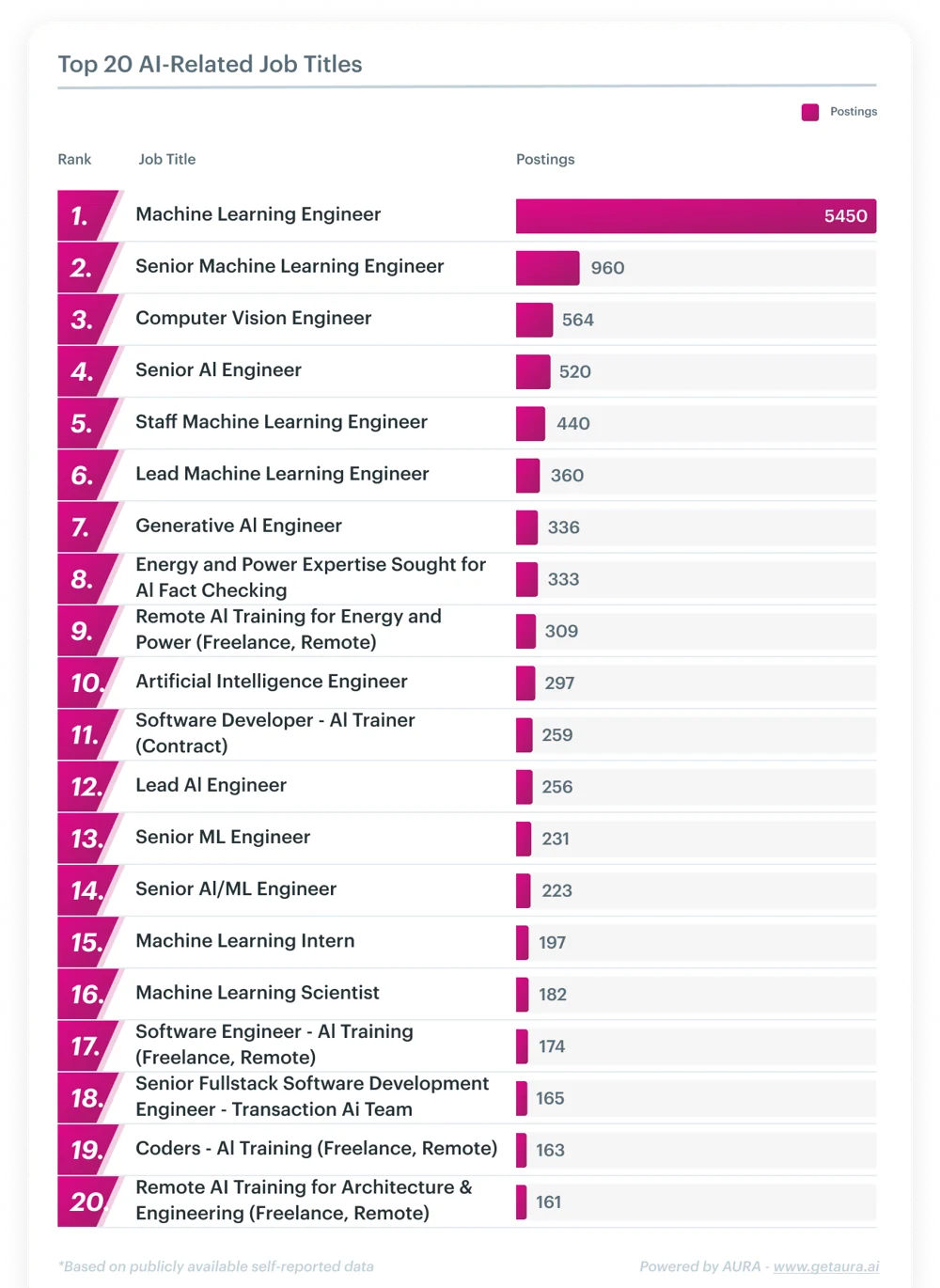Is Data Science a dead career?

I was talking to a friend of mine recently who is on the job market right now and she told me how difficult it is these days to land a data science job; there are too many people searching and too few job openings. I was curious, so I took a look, and what surprised me: the traditional “data scientist” role is nearly absent and replaced by many new specialized roles.

Top 20 AI related job openings in 2025 (Source: getaura.ai)
In 2019, I was working as a Business Intelligence Engineer, and I really wanted to become a data scientist. I thought that the title sounds prestigious, and that building machine learning models to predict the future must be so sexy. The Harvard Business Review said that Data science is the sexiest job of the 21st century, and why would not I want the sexiest job? I wanted it so badly that I made a big investment — I followed a Data Science Master’s degree and landed a Data Scientist job.
And even without a specialized degree, if you knew Python, some basic ML theory, and had a few portfolio projects, you were in! Everyone would beg you to work for them.
So what went wrong?
Market saturation and competition
It is always a good start to get yourself educated by doing courses and building portfolio projects. The thing is, how many people completed Andrew Ng’s Machine Learning course on Coursera? How many of us built a credit fraud classifier (that was one of my first portfolio projects!), or a Titanic survivor predictor based on Kaggle datasets? How many have built a demo chatbot using Streamlit? Perhaps everyone of us has spent a weekend building a RAG system and put that on GitHub. These are all great but the result is tens of thousands of nearly identical CVs, with the same certificates and the same portfolio.
The competition became fiercer and suddenly entry-level jobs required 3 years of experience, cloud deployments, CI/CD pipelines, and deep knowledge about every complex machine algorithm.
But what happened to the real entry-level positions? Here is the truth. AI has changed the Game and can now write code, visualize data, create graphs, and generate reports, which, to some extent, replaces junior-level execution.
The shift of focus
Instead of spending much of our time training and fitting models, it is now becoming increasingly easy to create applications based on foundational models.

The focus, to some extent, has shifted to a new thing: building and bringing AI applications to production. While you can easily create a proof of concept within days, it can still take weeks to months before you can get it ready for production. You might need to create a good frontend, a backend that can support scalability, vector databases that you can query without much overhead. Then you need testing pipelines to make sure nothing breaks with the next features and evaluation pipelines to monitor the performance of your AI applications. On top of that, everything will need to be deployed on a cloud service like Azure, a process often known as ML engineering or MLOps, and a new star is born: the AI engineer.
The data scientist of a few years ago would, if lucky, spend their time thinking about gradient descent, loss functions and fine-tuning, these days it is much less common. And while it is a good foundation to have for everyone in the field, practically on the job you will likely never have to do that again.
So what now?
The field hasn’t died. It’s evolving, fast, and it does not look like what it used to be. If you are trying to get into the field or wondering what to do next, here are a few thoughts.
While AI can replace some of the coding tasks of junior developers, think about what the AI cannot do well:
- Asking the right questions and connecting the dots
- Communicate and understand what people want
- Deal with people and politics
Moreover, currently the most wanted skill in the AI job market, is the ability to bring AI to production. And the one way to standout from the crowd, is by going deep instead of broad. Building a portfolio of a demo applications to show that you know things is great, but don’t step there. Go deeper by building one successful deployment of a retrieval pipeline that can be used in production by hundreds to thousands of users, and you’ll be golden. Try out cloud deployment platforms like Azure or Google and make use of free API credit.
And as said before, with the shift of focus that the job market is seeing, you don’t need to know that much about gradient descent or matrix multiplication anymore to be an AI Engineer. If you know how to work with APIs, build vector database, run CI/CD pipelines, develop AI frontends with Typescript, and know how to do evaluation, you are definitely in!
What we’ve been reading/watching this week
- Grok-4 was released and while we haven’t tried it out, it looks like it’s an actual beast, outperforming other top AI, most notably scoring a 44.4% on the humanity’s last exam benchmark, with 2nd best runner Gemini with only 26.9%.
- Climate change increases the risk of large AI outages due to water and power demand of large data centers during heat waves.
That’s it for now. Catch you soon!
With love,
Lan and Robert

Meet us on ai-stories.io